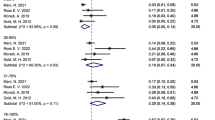Abstract
The Fraxel laser has been a useful method for skin resurfacing. According to recent reports, vitamin C has beneficial effects for the skin. However, there is a paucity of data about the effect of vitamin C associated with the Fraxel laser. This study aimed to assess the effect of topical vitamin C as a post-Fraxel regimen. The study involved 44 Koreans, who wished to improve their facial skin aesthetics. All the patients were treated by Fraxel laser twice, with a 4-week interval between treatments. Beginning on day 1, the treatment group used a topical vitamin C agent as a post-Fraxel regimen for 12 weeks. The control group was told not to apply any topical agents. At every visit (0, 4, 8, and 12 weeks after the first Fraxel), colorimetric status, stratum corneum hydration, skin surface lipids, skin pH, and transepidermal water loss (TEWL) were measured. The parameters showing significant differences were TEWL and pH. Stratum corneum hydration, skin surface lipids, and colorimetric status showed no statistically significant differences between the two groups. Topical vitamin C application reduces the injury of the skin’s surface barrier after Fraxel laser and promotes restoration of skin pH. However, there is a limit with increasing skin lightness or decreasing skin redness.
Level of Evidence II
This journal requires that authors assign a level of evidence to each article. For a full description of these Evidence-Based Medicine ratings, please refer to the Table of Contents or the online Instructions to Authors www.springer.com/00266.





Similar content being viewed by others
References
Graber EM, Tanzi EL, Alster TS (2008) Side effects and complications of fractional laser photothermolysis: experience with 961 treatments. Dermatol Surg 34:301–305
Collawn SS (2007) Fraxel skin resurfacing. Ann Plast Surg 58:237–240
Metelitsa AI, Alster TS (2010) Fractionated laser skin resurfacing treatment complications: a review. Dermatol Surg 36:299–306
Manstein D, Herron GS, Sink RK, Tanner H, Anderson RR (2004) Fractional photothermolysis: a new concept for cutaneous remodeling using microscopic patterns of thermal injury. Lasers Surg Med 34:426–438
Geronemus RG (2006) Fractional photothermolysis: current and future applications. Lasers Surg Med 38:169–176
Lee HS, Kim IH (2003) Salicylic acid peels for the treatment of acne vulgaris in Asian patients. Dermatol Surg 29:1196–1199
Ahn HH, Kim IH (2006) Whitening effect of salicylic acid peels in Asian patients. Dermatol Surg 32:372–375
Farris PK (2005) Topical vitamin C: a useful agent for treating photoaging and other dermatologic conditions. Dermatol Surg 31:814–817
Lima CC, Pereira AP, Silva JR, Oliveira LS, Resck MC, Grechi CO, Bernardes MT, Olimpio FM, Santos AM, Incerpi EK, Garcia JA (2009) Ascorbic acid for the healing of skin wounds in rats. Braz J Biol 69:1195–1201
Traikovich SS (1999) Use of topical ascorbic acid and its effects on photodamaged skin topography. Arch Otolaryngol Head Neck Surg 125:1091–1098
Eberlein-König B, Schäfer T, Huss-Marp J, Darsow U, Möhrenschlager M, Herbert O, Abeck D, Krämer U, Behrendt H, Ring J (2000) Skin surface pH, stratum corneum hydration, transepidermal water loss and skin roughness related to atopic eczema and skin dryness in a population of primary school children. Acta Derm Venereol 80:188–191
Yosipovitch G, Xiong GL, Haus E, Sackett-Lundeen L, Ashkenazi I, Maibach HI (1998) Time-dependent variations of the skin barrier function in humans: transepidermal water loss, stratum corneum hydration, skin surface pH, and skin temperature. J Invest Dermatol 110:20–23
Marchionini A, Hauskenecht W (1938) Säuremantel der Haut und Bakterienabwehr. Klin Wochenschr 17:663–666
Schmid-Wendtner MH, Korting HC (2006) The pH of the skin surface and its impact on the barrier function. Skin Pharmacol Physiol 19:296–302
Author information
Authors and Affiliations
Corresponding author
Rights and permissions
About this article
Cite this article
Kim, HR., Hwang, NH., Chi, SH. et al. Is Topical Vitamin C an Effective Post-Fraxel Laser Regimen for Asians?. Aesth Plast Surg 36, 1216–1221 (2012). https://doi.org/10.1007/s00266-012-9942-x
Received:
Accepted:
Published:
Issue Date:
DOI: https://doi.org/10.1007/s00266-012-9942-x




